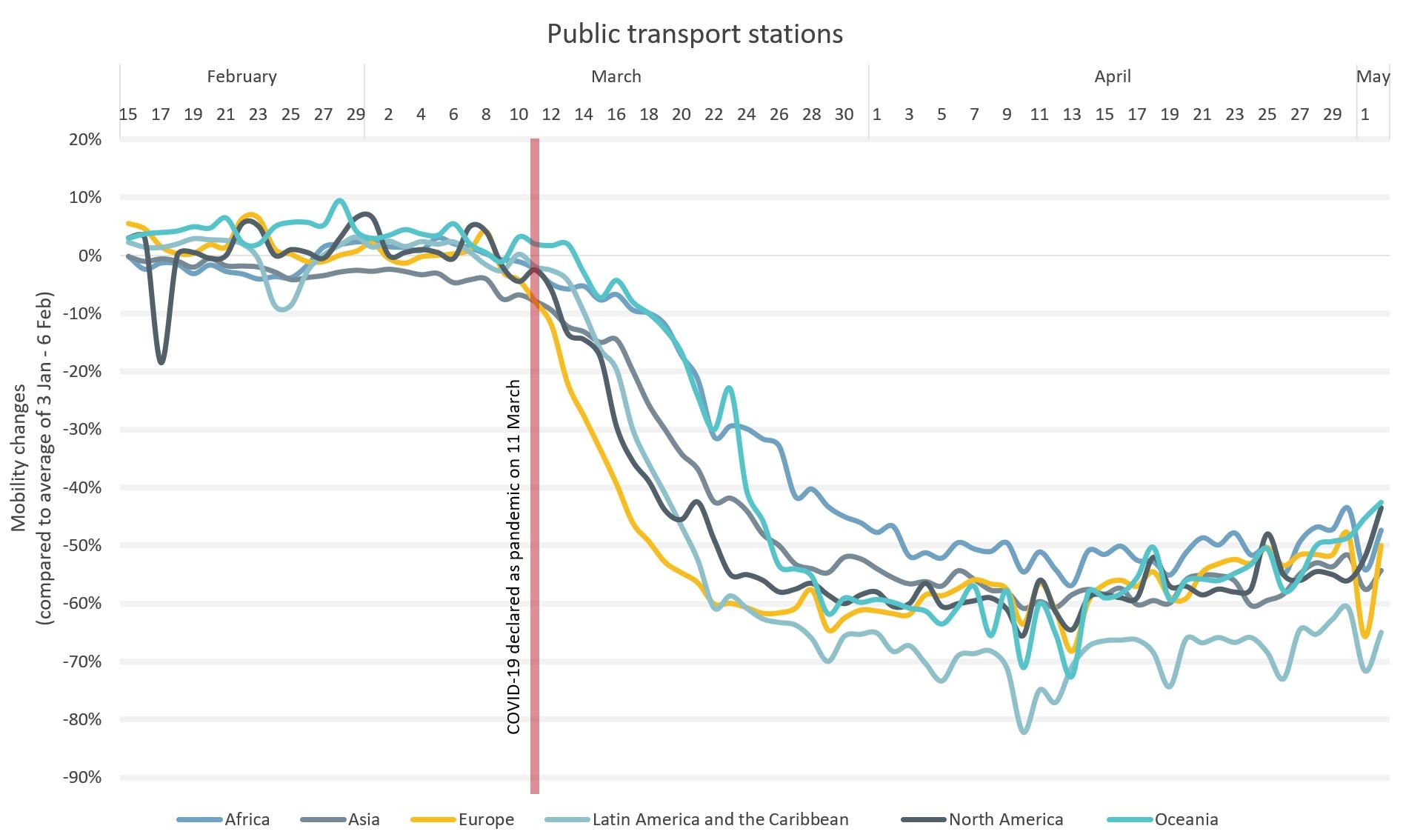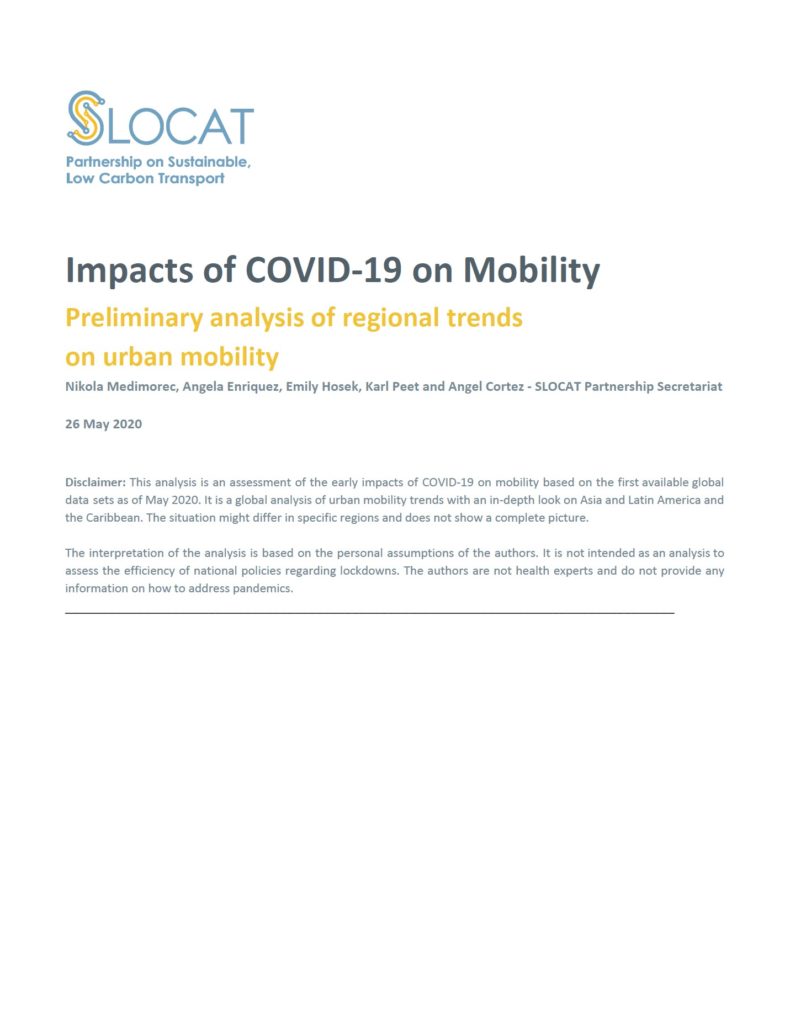Impact of COVID-19 on Mobility
The COVID-19 outbreak was declared a global pandemic on 11 March 2020 by the World Health Organisation (WHO). Shortly after, United Nations Secretary General António Guterres described the pandemic as “a human crisis, with multifaceted threats” and “the greatest test that we have faced together since the formation of the United Nations.”
In recent weeks, global data showing how mobility is being affected by COVID-19 in different regions has emerged, primarily from Google and Apple through their map services data and location history data. This analysis examines such data sets to describe the early impacts of the pandemic on passenger mobility in urban environments. It looks at how regions and different income groups are affected, and seeks to provide a preliminary answer to the question of how COVID-19 is impacting urban mobility and transport modes.


